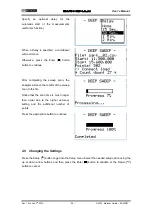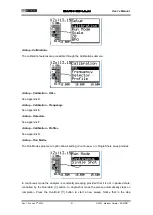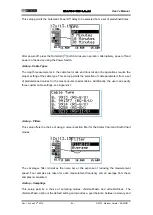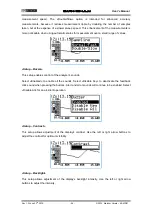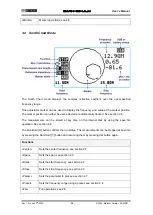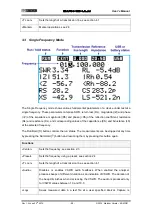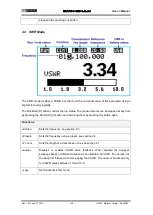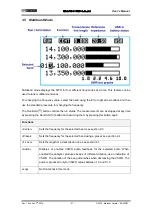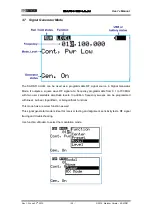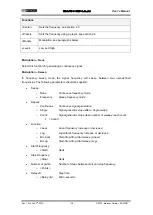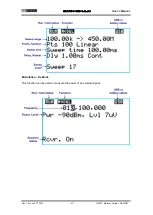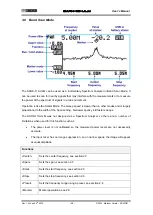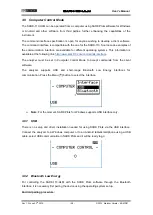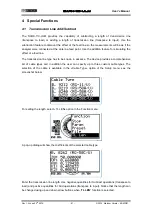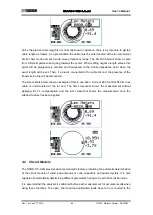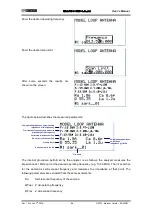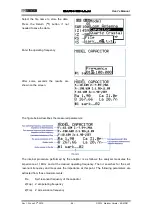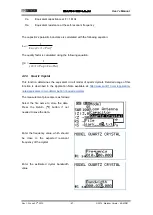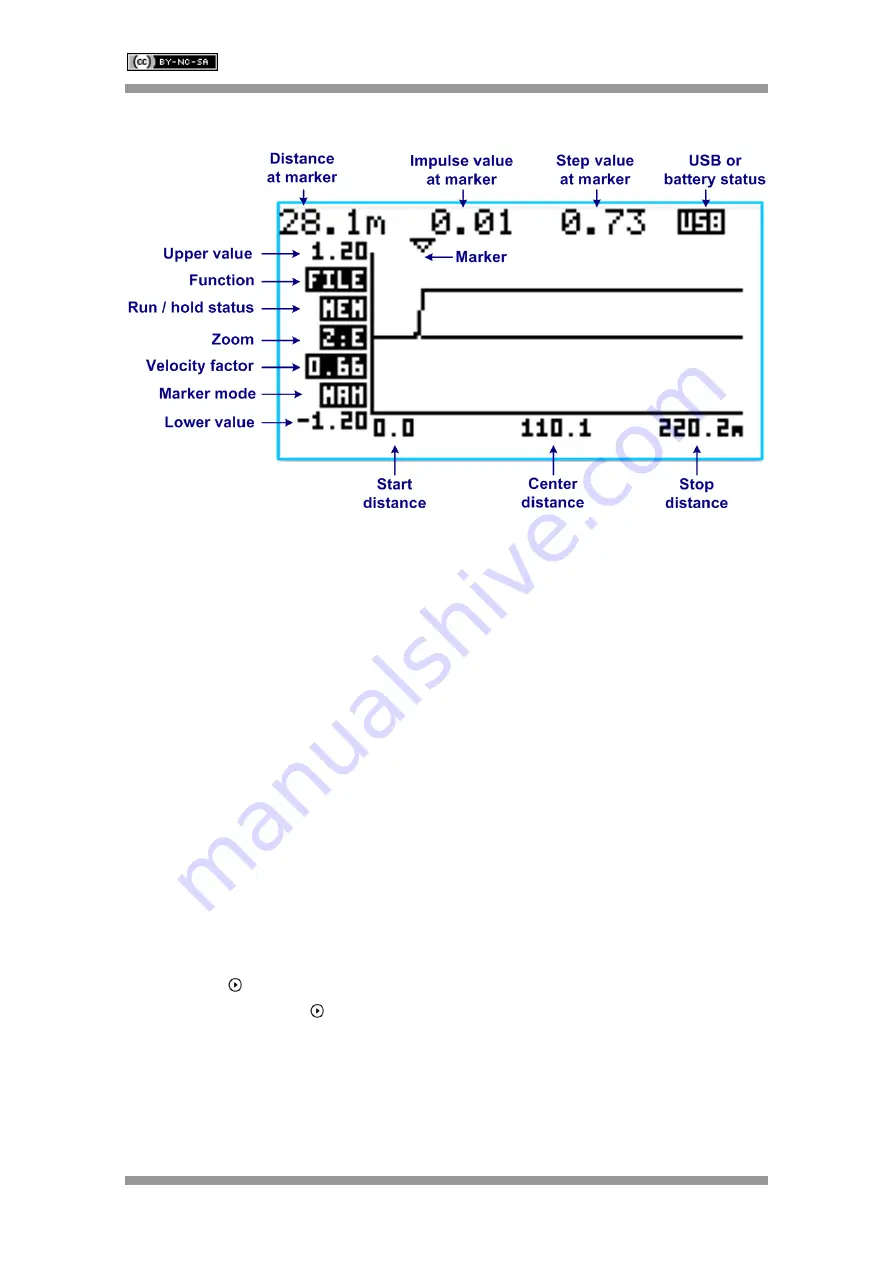
SARK-110-ULM
User’s Manual
Rev 1.0 June 22
th
, 2019
- 32 -
© 2019, Melchor Varela
– EA4FRB
3.6 Cable Test Mode (TDR)
Cable Test or Time Domain Reflectometer (TDR) mode is intended to identify potential coaxial
cable faults that could disrupt signal transmission. Unlike native TDR test equipment, the
method of measurement in the SARK-110-ULM is based on the theory of Frequency Domain
Reflectometry (FDR).
The analyzer makes swept reflection measurements over the entire frequency range and
mathematically transforms the gathered data to Time Domain using an inverse Fourier
transform. As a result, the step and impulse responses are plotted on the display, providing
information about the location and the nature of any fault. The impulse response trace gives an
indication of the fault location. The step response trace provides an indication of the nature of
the fault. The distance resolution is 5 cm (2 inches).
The vertical axis of the graph displays the reflection coefficient: Rho = -1 for short load, 0 for
matched impedance load (ZLoad = Z0), or Rho = +1 for open load. The horizontal axis displays
the distance in meters.
The distance from the start of the cable to any discontinuity may be found by moving the marker
over the discontinuity of interest. The distance of the fault from the start of the cable is then
shown in that marker’s distance figure.
The Run/Hold [ ] button controls the run status. The measurements can be stopped at any time
by pressing the Run/Hold [ ] button and resuming them by pressing this button again. In this
mode it takes more time to show the plots compared other modes, because measurements will
be done in more frequency points and plots are displayed after capturing all of them.



